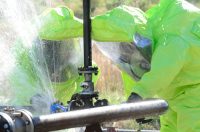Minimize the Potential for Accidents: Before, During, and After Hazardous Material Handling
Make sure employees who get anywhere near hazardous materials understand the risks and the precautions. Depending on the hazardous material and the amount, hazards can range from moderate to deadly. Your employees also need to realize that hazardous substances can be hazardous in different ways. They can be:










